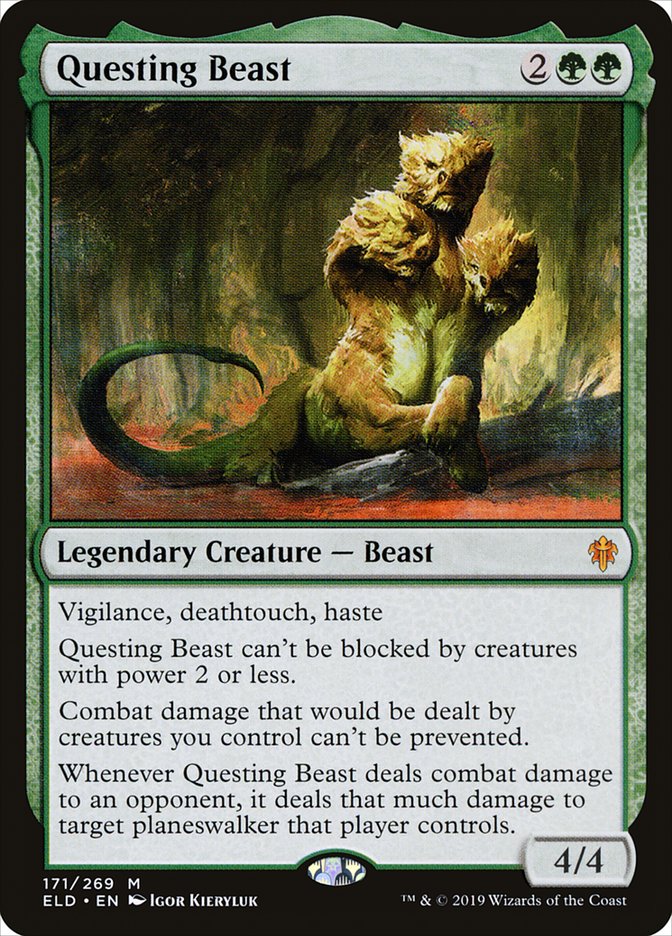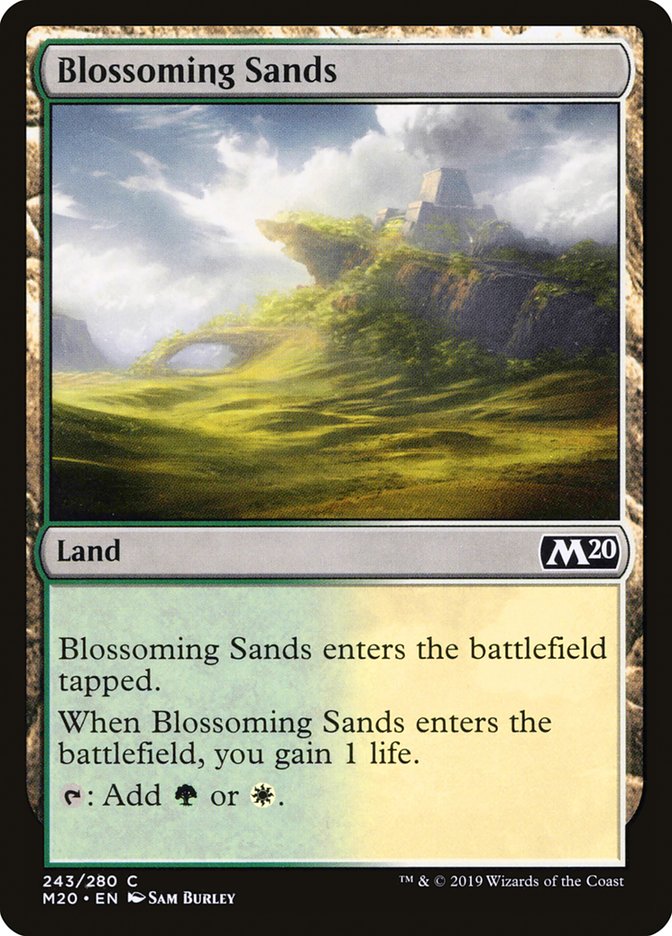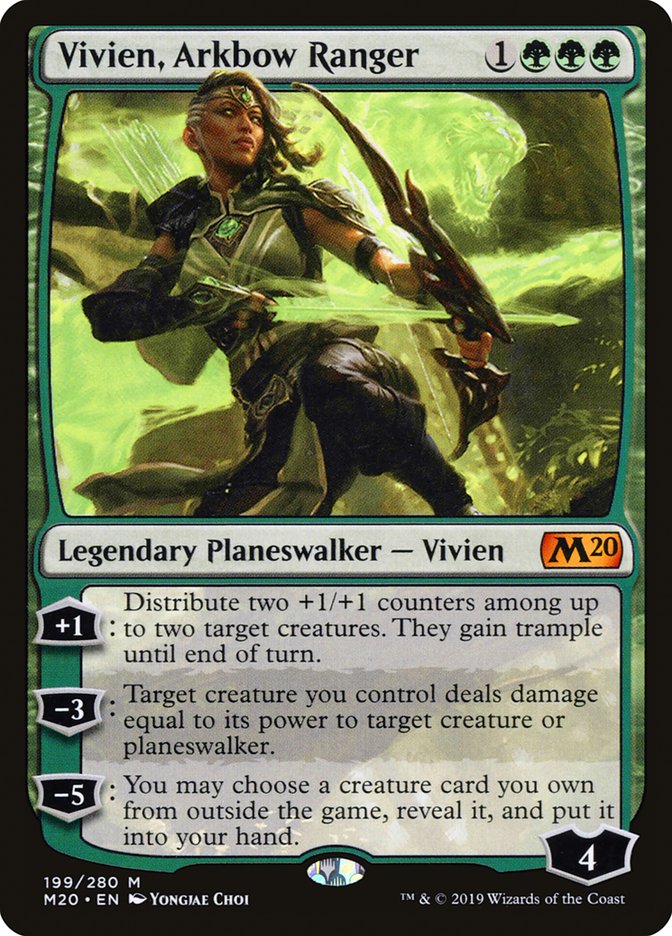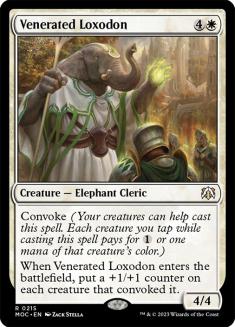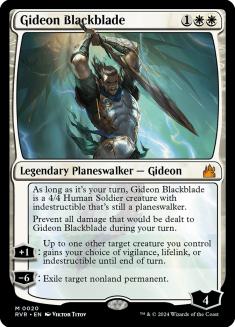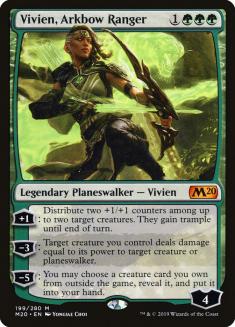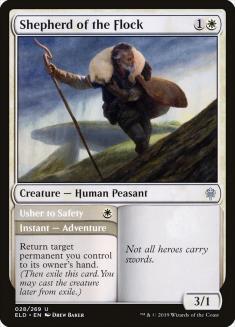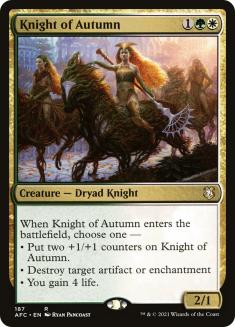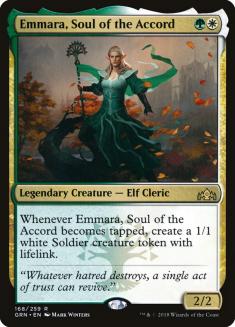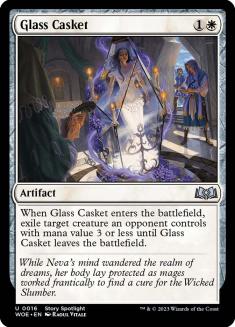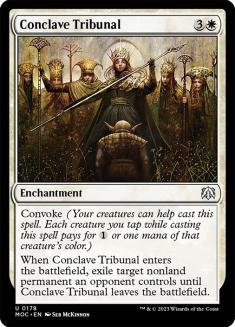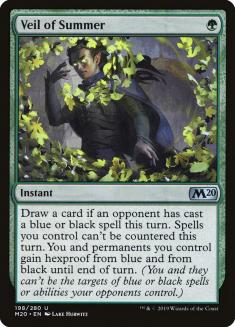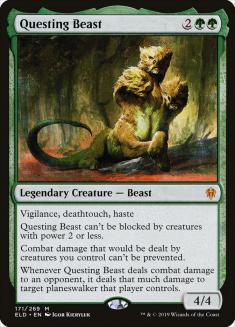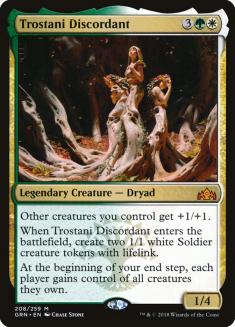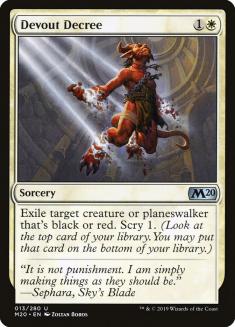Going into SCG Philadelphia, my team had one goal: find a deck that competes with Bant Golos in Throne of Eldraine Standard. I quickly locked in Mono-Green Tron for the Modern seat and our Legacy player was set on the Hogaak, Arisen Necropolis list that Tariq Patel has been winning with nonstop. Thus, most of our testing was spent searching for a Standard deck for Max McVety.
Some things became clear quickly: namely the futility of playing control. Field of the Dead is almost impossible to remove and provides an incredibly strong end-game. Ramp decks can sometimes be attacked by countering or discarding all their ramp spells and stranding them with expensive bricks. After all, Field of the Dead is textless if you never play land number seven. But in this case, Hydroid Krasis plus Golos’s own activation ensures that the deck never runs out of resources. Ramp decks can also frequently be exploited by combo decks that ignore their insurmountable battlefields. But with Nexus of Fate gone, we could find no such combo deck in Standard.
That left us with one option: go under them. Standard currently contains a wide variety of aggressive strategies, but we started with old faithful:
Creatures (28)
- 4 Loyal Pegasus
- 4 Venerated Loxodon
- 4 Tithe Taker
- 4 Law-Rune Enforcer
- 4 Venerable Knight
- 4 Faerie Guidemother
- 4 Giant Killer
Lands (20)
Spells (12)
Sideboard

This deck was very, very bad. As it turns out, without History of Benalia, Benalish Marshal, or Legion’s Landing, Mono-White Aggro basically only wins if it draws exactly Venerated Loxodon. To make matters worse, sweepers are very popular in Standard right now, and Realm-Cloaked Giant is not size-gated. Thus, even a Turn 3 Venerated Loxodon did not always translate to victory.
Despite its poor performance, this deck taught us two important lessons:
1. Flying over Bant Golos is an excellent way to finish them off once they’re low. Mono-Black Aggro lists attempt this with Rankle, Master of Pranks and Spawn of Mayhem but Faerie Guidemother works just as well. This strategy tends to work best if you can answer Hydroid Krasis, which this deck does with cards like Conclave Tribunal and Giant Killer.
2. Bant Golos leans hard on sweepers to control the early game of aggressive decks. As a result, even a few resilient creatures can translate to lots of damage. Gideon Blackblade out of the sideboard was invaluable in this respect, as was his ability to attack right through a 4/4 Hydroid Krasis when he takes to the skies.
We also explored the various Mono-Red lists that were floating around at this time. They performed okay against Bant Golos, and if Standard devolves into a one-deck format, they might be worth another look. The main problem with red decks is that they’re cold to Oko, Thief of Crowns. The combination of a high-loyalty planeswalker, lifegain, and Elk blockers is too much most of the time. Bant Golos is currently the most popular deck in Throne of Eldraine Standard, but the format still contains a variety of Oko midrange decks, not to mention the fact that some Bant Golos lists play him.
It was around this time that we saw Reid Duke deck from the MPL Eldraine Split:
Creatures (26)
- 1 Emmara, Soul of the Accord
- 4 Venerated Loxodon
- 2 Trostani Discordant
- 2 Flaxen Intruder
- 4 Lovestruck Beast
- 4 Faerie Guidemother
- 4 Giant Killer
- 4 Edgewall Innkeeper
- 1 Shepherd of the Flock
Lands (21)
Spells (13)

Reid’s deck uses the absurd cared advantage from Edgewall Inkeeper and the Adventure half of Shepherd of the Flock to rapidly recover from sweepers. As noted above, this is a big game given Bant Golos’s reliance on them. It’s relevant to note here that sweepers are also key to the Dance of the Manse control deck that is also somewhat popular. Reid’s deck also had an incredibly potent weapon lurking in his sideboard.
Questing Beast can force through damage no matter how many Zombies Field of the Dead makes and its deathtouch means that the Tireless Pilgrim is nothing but a chump blocker. At the same time, Questing Beast’s vigilance means that it’s nearly impossible for the Bant Golos player to turn the corner and race back. Oh, and did I mention that the Beast can attack immediately and pressure their life total and planeswalkers all at once? Questing Beast is exactly the sort of card you want to finish off a Bant Golos player on a low life total.
The problem with Reid’s strategy is that his deck is fundamentally a midrange deck. Often, going a little bigger than the other decks in the format is an advantage, but against Bant Golos the opposite is true. You need to be fast because the Zombie horde will go over the top of anything eventually.
March of the Multitudes specifically is unimpressive. Casting it early will generally be over-committing into a sweeper, but it’s also bad post-sweep when you have few bodies for convoke. Trostani Discordant is incredible against aggressive decks, but against Bant Golos, it prevents Lovestruck Beast from dealing much-needed damage and is generally too slow to matter. As a result, we turned to a hybrid: the aggressive draws of Mono-White Aggro to get them low with the resiliency of Edgewall Inkeeper to recover from sweepers. Questing Beast for steady damage through Zombies, backed up by with the burst potential of Faerie Guidemother.
Enter Selesnya Adventures.
Creatures (28)
- 2 Emmara, Soul of the Accord
- 4 Venerated Loxodon
- 4 Lovestruck Beast
- 4 Faerie Guidemother
- 4 Questing Beast
- 4 Giant Killer
- 4 Edgewall Innkeeper
- 2 Shepherd of the Flock
Planeswalkers (3)
Lands (23)
Spells (6)

We decided on Blossoming Sands over Flower // Flourish because of its ability to enable Gideon Blackblade into Questing Beast curves. The loss of a late-game mana sink hurts a little, but this deck has a lot to do with its mana anyway due to the density of Adventure cards.
Vivien, Arkbow Ranger is a piece of technology that we only found by looking through every Standard-legal card containing the word “trample” on our plane ride to the tournament, but it more than proved itself over the course of the weekend. Sometimes, games against Bant Golos devolve to a stage where they can chump block all your creatures indefinitely. Vivien breaks open these games by allowing your Gideons and Lovestruck Beasts to attack profitably while also removing any creature capable of blocking Questing Beast. Casting it is non-trivial, but you don’t need to cast it on Turn 4 and Edgewall Innkeeper and Once Upon a Time mean that you see a lot more cards than the average Selesnya deck.
Sideboarding
VS Bant Golos
Out:
In:
This matchup is simple – get your opponent as low as you can and then finish through the Zombie horde with Questing Beast, Faerie Guidemother, and Vivien. Venerated Loxodon doesn’t contribute to either of those, so it gets the axe, and sometimes in Game 1, it’s not even worth casting. In general, err on the side of playing Gideon over more damage-efficient threats, as his ultimate is surprisingly relevant if you get him down soon enough.
VS Jeksai Fires
Out:
In:
Only two things matter here – keeping Fires of Invention off the battlefield and rebuilding from sweepers. Honestly, if their namesake enchantment isn’t on the battlefield, their deck looks embarrassing.
VS Simic Food
Out:
In:
Simic Food decks come in many different flavors, but almost all of them feature mana creatures, Oko, Hydroid Krasis, and Wicked Wolf. They are generally proactive enough that Gideon is obnoxious to protect, and without sweepers, there’s no real need to keep him in. The risk of falling behind and losing a card for nothing is just not worth it. Vivien, on the other hand, is excellent – she can remove Oko without using the combat step and can turn your Elks into formidable threats.
VS Esper Stax
Out:
In:
This matchup can be a tricky balance between pressuring them enough to race Dance but not so much that you concede to Realm-Cloaked Giant. In my experience, most people play around sweepers too much. You’re playing a deck that has enough card advantage to recover from sweepers regularly, so more often than not, you should make them have it.
VS Mono-Red Aggro
Out:
In:
You are almost always the control deck against Mono-Red. As such, your plan is to answer their threats, grind card advantage, and eventually create an unsurmountable battlefield and win. Questing Beast is not an important part of that plan, and Shepherd almost always trades down. Because you’re often taking a defensive role, none of the planeswalkers are worthwhile.
VS Mono-Black Aggro
Out:
In:
This matchup generally plays out similarly to Mono-Red. Their important threats are flyers instead of Experimental Frenzy, but the principle is the same. Be aware that your deck makes enough tokens that an active Priest of Forgotten Gods can sometimes be ignored. I’m not suggesting you never remove it; just be aware it’s not as terrifying as it is against most creature decks.
VS Other Adventure Decks
Out:
In:
Edgewall Innkeeper mirrors tend to devolve into an endless grind where both players have massive battlefields. As a result, any card capable of making progress each turn is a massive threat, as are flyers. This is one of the matchups where you sometimes want to slow-roll your Innkeeper to guarantee a card.
Adventure Time
If you decide to register Bant Golos for your next tournament, no one can criticize that selection. The deck is powerful, consistent, and hard to interact with. But Bant Golos and other Golos variants are increasingly becoming inbred to gain an edge in the mirror, so playing something else becomes more and more appealing. Selesnya Adventures is ready to take on Bant Golos while having a coherent gameplan against the rest of the field.
Plus, if Wizards of the Coast does ban Field of the Dead, you might just be practicing with the best deck in the format.


